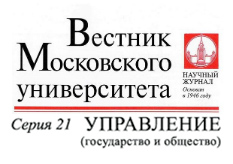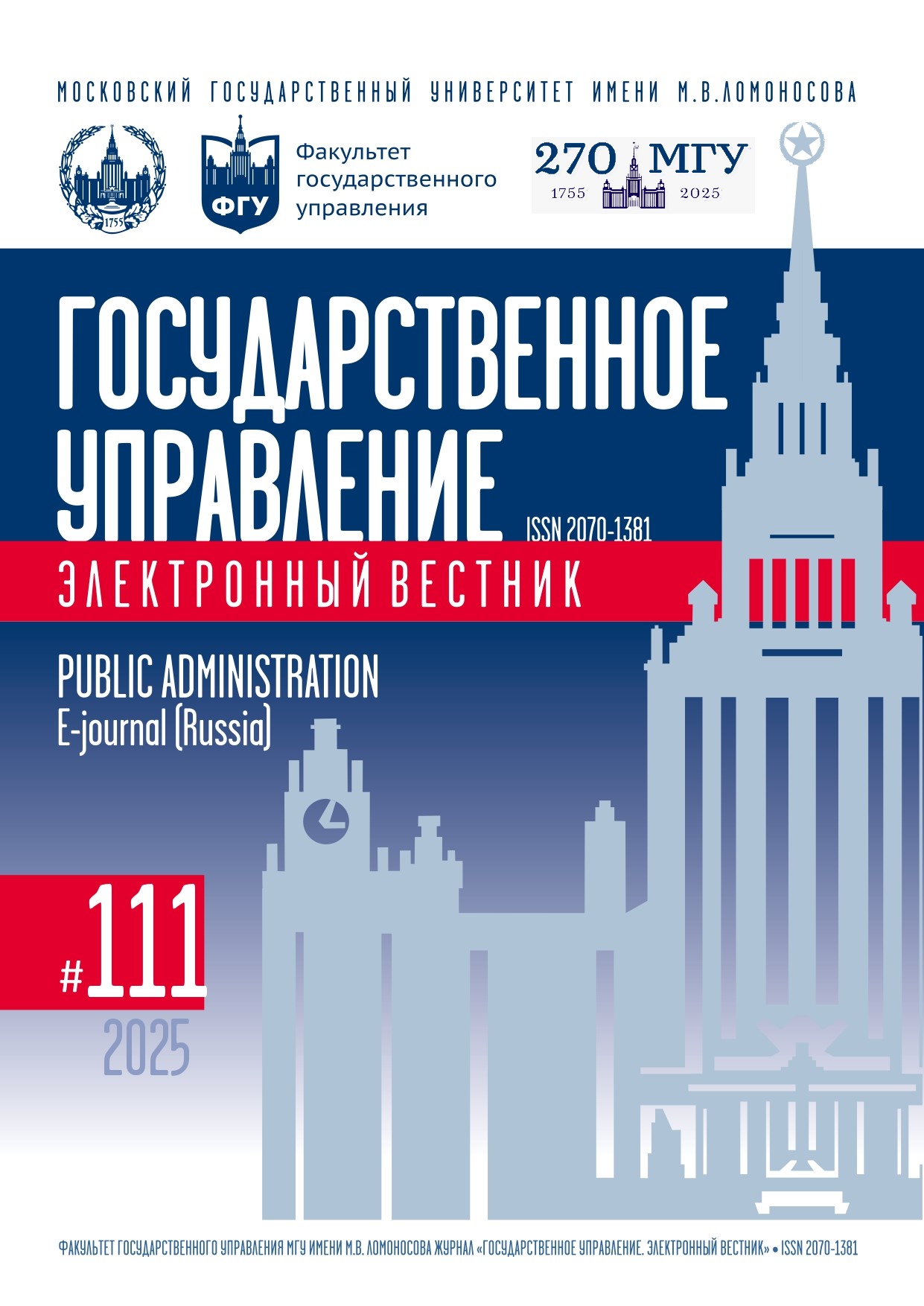Methodology of Building a Neural Network Architecture for Regulating Social and Labour Processes in BRICS Megacities
DOI:
https://doi.org/10.55959/MSU2070-1381-111-2025-72-81Keywords:
Neural network architectures, social and labor processes, megacities, BRICS, digital employment, explicable AI, hybrid models.Abstract
The article presents a comprehensive methodology for building a neural network architecture for forecasting, adapting and regulating social and labour processes in the BRICS megacities, where approximately 470–480 million people lived in 2023. The study substantiates the use of hybrid architectures based on RNN, LSTM, CNN and GAN, which ensures the processing of temporal, spatial and synthetic data in highly urbanized environments. The level of urbanization in the BRICS countries ranges from 36% in India to 87% in Brazil, which requires customized digital solutions. It has been revealed that informal employment in India reaches 80%, and in South Africa the unemployment rate in 2023 was 32%, which creates the need for models to restore hidden labour indicators. The authors demonstrate that the use of attention mechanisms allows taking into account country-specific features, and explicable AI increases the transparency of decisions for government authorities. Special attention is paid to platform employment: up to 46% of workers in Brazil and India face unstable orders, while in Russia and China it is about 31%. Generative networks (GANs) are used to model social policy scenarios taking into account stress factors. Special attention is paid to the Decent-Gig Index metric as a target indicator for training samples. The institutional asynchrony between the BRICS countries is offset by the multitasking architecture that supports different legal regimes. It is shown that neural networks can interpret migration flows, for example, 140 million seasonal workers in India annually. The article highlights the importance of digital ecosystems of megacities in shaping flexible employment policies. The proposed architecture is focused on integration into urban management systems through APIs and multi-agent platforms. The possibility of using real-time labour analytics, already implemented in Shenzhen and Sao Paulo, is substantiated. The methodology is based on 18 sources with up-to-date data and confirms the high scientific and practical importance of using neural networks in regulating social and labour relations.
References
Вавилина А.В., Комарова Т.В. Роль России в международной системе разделения труда — перспективы наращивания экспорта в страны БРИКС // Вестник МИРБИС. 2023. № 4(36). С. 6–15. DOI: 10.25634/MIRBIS.2023.4.1
Галиева Г.Ф., Сазанова Е.В., Дик Е.Н., Аминева Р.Р. Исследование современных тенденций участия населения стран БРИКС и ОЭСР на глобальном рынке онлайн-труда // Известия Юго-Западного государственного университета. Серия: Экономика. Социология. Менеджмент. 2023. Т. 13. № 3. С. 10–23. DOI: 10.21869/2223-1552-2023-13-3-10-23
Молчанов И.Н. Образование и наука: тенденции развития кадрового потенциала // Лидерство и менеджмент. 2022a. Т. 9. № 3. С. 691–708. DOI: 10.18334/lim.9.3.114932
Молчанов И.Н. Современные тенденции развития человеческого потенциала // Экономическое возрождение России. 2022b. № 4(74). С. 28–40. DOI: 10.37930/1990-9780-2022-4-74-28-40
Петровский В.Е. Перспективы расширения и развития БРИКС: академические дискуссии в Китае // Проблемы Дальнего Востока. 2024. № 2. С. 48–60. DOI: 10.31857/S0131281224020047
Харланов А.С. Цифровая трансформация в международном бизнесе: теория и практика // Высшая школа: научные исследования: материалы Межвузовского международного конгресса, Москва, 23 июня 2023 года. М.: Инфинити, 2023. С. 7–11.
Черных Е.А., Золотина О.А. Качество занятости на цифровых платформах труда: подходы к измерению и оценки по странам БРИКС // Уровень жизни населения регионов России. 2024. Т. 20. № 2. С. 211–227. DOI: 10.52180/1999-9836_2024_20_2_6_211_227
Шакурова Н.Е. БРИКС как стратегически важное партнерство России: анализ и перспективы // Евразийский Союз: вопросы международных отношений. 2024. Т. 13. № 11(64). С. 2027–2033. DOI: 10.35775/PSI.2024.64.11.004
Ari Y.O. FDI and the Unemployment: A Causality Analysis for the BRICS Countries // Ekonomik Ve Sosyal Araştırmalar Dergisi. 2021. Vol. 17. Is. 2. P. 269–278.
Beletskaya M. BRICS Labor Markets: Competing with the Largest Economy // BRICS Journal of Economics. 2022. Vol. 3. Is. 2. P. 75–96. DOI: 10.3897/brics-econ.3.e85970
Girardi G.C., Rubbo P., Broday E.E., Arnold M., Picinin C.T. Comparative Analysis between Quality of Life and Human Labor in Countries Belonging to G7 and BRICS Blocks: Proposition of Discriminant Analysis Model // Economies. 2024. Vol. 12. DOI: 10.3390/economies12050124
Gu L., Wang M.-Ch., Li F. The Correlation between Economic Fluctuation, Workforce Employment and Health Expenditure in the BRICS Countries // Frontiers in Public Health. 2022. Vol. 10. DOI: 10.3389/fpubh.2022.933728
Krivorotov V.V., Mokhov V.G., Ivanova O.Yu., Polyakova O.Yu. Research of the Effects of Convergence of Economic Policy in Regional and Interregional Integration Associations // Journal of Computational and Engineering Mathematics. 2020. Vol. 7. Is. 2. P. 15–30. DOI: 10.14529/jcem200202
Kum H. The Relationship between Informal Economy and Income Inequality: An Econometric Analysis for BRICS Countries // International Journal of Economics and Financial Issues. 2024. Vol. 14. Is. 1. P. 117–125.DOI: 10.32479/ijefi.15664
Porca-Konjikusic S., Hudson Jr.P.L, Lodha J.H. Global Economic Integration: How do ASEAN and BRICS Organizations Contribute to the Process? // BRICS Journal of Economics. 2024. Vol. 5. Is. 2. P. 155–168. DOI: 10.3897/brics-econ.5.e121010
Sergeeva M., Razumova T., Zabelina O. Challenges of Platform Employment Development in BRICS Countries // BRICS Journal of Economics. 2024. Vol. 5. Is. 3. P. 125–140. DOI: 10.3897/brics-econ.5.e136477
Tutar H., Eryüzlü H., Erdem A.T., Sarkhanov T.A Study on Comparison of Economic and Scientific Performances of BRICS Countries // Journal of Economic Studies. 2025. Vol. 52. Is. 1. P. 203–222. DOI: 10.1108/JES-12-2023-0714
Wang M. «BRICS+» Cooperation Model: An Extension of the New International Economic Order // Horizons of Economics. 2025. No. 1(88). P. 225–230.
Yan F., Li H., Wang W., Zhang J. The Trend in Density of Skilled Health Personnel in BRICS Countries: Implication for China and India // The International Journal of Health Planning and Management. 2023. Vol. 38. Is. 3. P. 759–772. DOI: 10.1002/hpm.3623
Downloads
Published
Similar Articles
- Maria A. Yudina, Digital Labour Control — Challenge of Modern Time , Public Administration. E-journal (Russia): No. 92 (2022)
- Valery N. Minat, Ethnocultural Polarization of Government Personnel and the Choice of Public Administration Model (Using the Example of the Southwestern United States) , Public Administration. E-journal (Russia): No. 102 (2024)
- Elena E. Shestakova, Social Policy for Human Development: World Experience , Public Administration. E-journal (Russia): No. 85 (2021)
- Leonid A. Tutov, Alexander A. Izmaylov , Possibilities of Applying Methodology of the New Institutional Economics to Improve Antitrust Regulation in the Context of Digital Transformation , Public Administration. E-journal (Russia): No. 85 (2021)
- Daria V. Evtyanova, Artificial Neural Networks as a Tool for Economic Development Planning , Public Administration. E-journal (Russia): No. 84 (2021)
- Vladimir I. Shmakov, Main Directions of Modern Transformation and Modernization of Russian Society, Ways to Overcome the Systemic Crisis in the Context of Technological Revolution: Alternative Strategic Development Models , Public Administration. E-journal (Russia): No. 105 (2024)
- Andrey M. Eremin, Evolution of Scientific Approaches to State Participation in the Field of Mass and Professional Sports in the 20th — early 21st centuries , Public Administration. E-journal (Russia): No. 111 (2025)
- Marianna V. Kudina, Azret Sh. Kasymov, Venture Capital in the Context of ESG Transformation , Public Administration. E-journal (Russia): No. 93 (2022)
- Anna М. Ryabinina, Technologies of Higher Education Internationalization in Modern Conditions , Public Administration. E-journal (Russia): No. 94 (2022)
- Irina E. Kalabikhina, Mikhail A. Maksimov, The Gender Gap in Demographic Losses during the Coronavirus Pandemic: Why the Female Life Expectancy Losses Are More than the Male Ones in Russia , Public Administration. E-journal (Russia): No. 97 (2023)
You may also start an advanced similarity search for this article.




